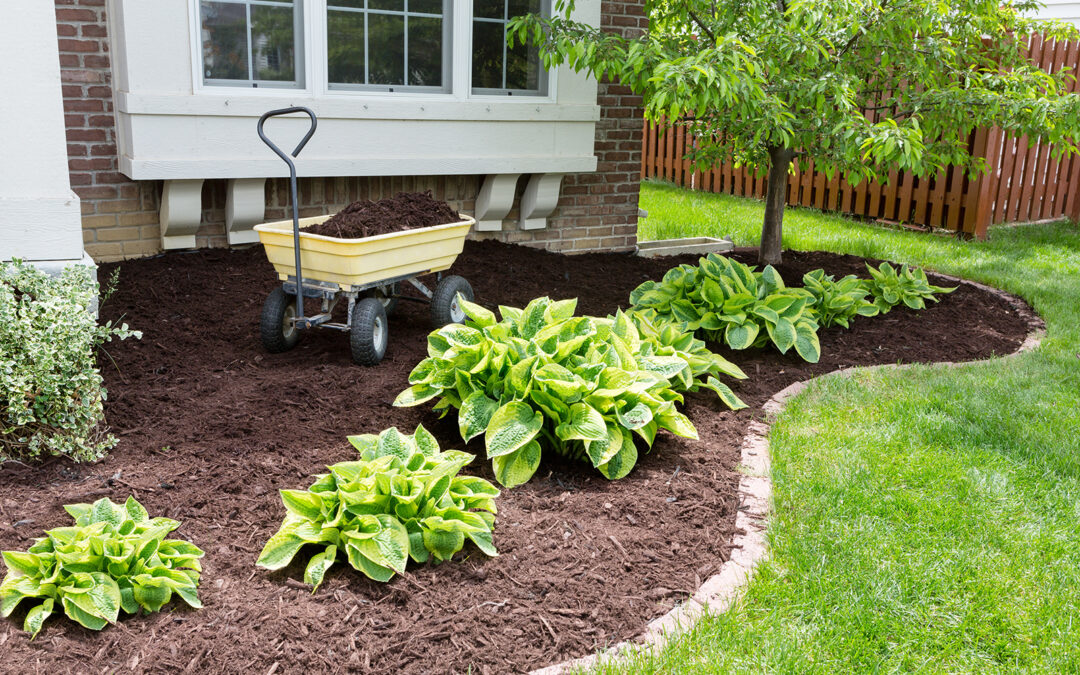Mulch is not just a gardener’s best friend; it’s also a fantastic way to recycle organic materials, reduce waste, and nurture your garden. Whether you’re a homeowner looking to enhance your backyard, a garden enthusiast aiming to optimize your plant health, or an environmentalist keen on sustainability, using this material can be a practical and eco-friendly solution.
Here’s how you can make the most for recycling in residential areas.
How to obtain mulch for a great bulk price call: 239 352 7888
What is Mulch?
It refers to any material spread or laid over the surface of the soil as a covering. It helps retain soil moisture, suppress weeds, keep the soil cool, and make the garden bed look more attractive. Organic mulches also help improve the soil’s fertility as they decompose. Common types of this organic material include wood chips, bark, straw, grass clippings, and leaves.
Benefits of Using Mulch
- Moisture Retention: It helps retain moisture in the soil, reducing the need for frequent watering.
- Weed Control: A thick layer of mulch can suppress weed growth by blocking sunlight.
- Temperature Regulation: It keeps the soil cooler in the summer and warmer in the winter.
- Improved Soil Health: Organic mulches decompose over time, adding valuable nutrients back into the soil.
- Eco-friendly: Using this recycle material reduces waste and promotes a sustainable gardening practice.

How to Use Mulch as a Recycling Material
1. Wood Chips and Bark
Source: These can often be sourced from local tree services, sawmills, or your own backyard if you have fallen branches.
Application:
- Spread a 2-3 inch layer around trees, shrubs, and garden beds.
- Keep the mulch a few inches away from plant stems and tree trunks to prevent rot.
- Replenish annually as the mulch decomposes.
2. Grass Clippings
Source: Collect grass clippings after mowing your lawn.
Application:
- Allow clippings to dry out for a day or two to prevent matting.
- Apply a thin layer (1-2 inches) around plants. Thicker layers can become compacted and may hinder water penetration.
- Mix with other organic materials like leaves or straw to balance the carbon-to-nitrogen ratio.
3. Leaves
Source: Gather fallen leaves from your yard during the fall.
Application:
- Shred leaves using a lawnmower with a bagging attachment or a leaf shredder to accelerate decomposition and prevent matting.
- Spread a 2-3 inch layer over your garden beds.
- Compost any extra leaves to use later as mulch or soil amendment.
4. Straw and Hay
Source: Purchase from local farms or garden centers.
Application:
- Spread a 2-3 inch layer around vegetable gardens and flower beds.
- Straw is preferred over hay as it contains fewer seeds.
- Turn the mulch into the soil at the end of the growing season to enhance soil structure.
Tips for Effective Mulching
- Choose the Right Mulch: Different plants may benefit from different types of mulch. For instance, acid-loving plants like azaleas and blueberries prefer pine needles.
- Proper Depth: Too much mulch can suffocate plant roots, while too little won’t be effective. Aim for a 2-3 inch layer.
- Refresh Regularly: Organic mulches decompose over time, so refresh your mulch annually or as needed.
- Keep it Clean: Avoid using diseased plants or weeds that have gone to seed as mulch.
Conclusion
Using mulch as a recycling material is a win-win for your garden and the environment. By repurposing yard waste and other organic materials, you can create a healthier, more sustainable garden ecosystem. Ready to transform your garden? Start mulching today and see the difference it makes! For more gardening tips or to learn how to make the most of mulch in your residential area, visit our blog page or reach out to Collier Recycling Let’s grow a greener future together!

